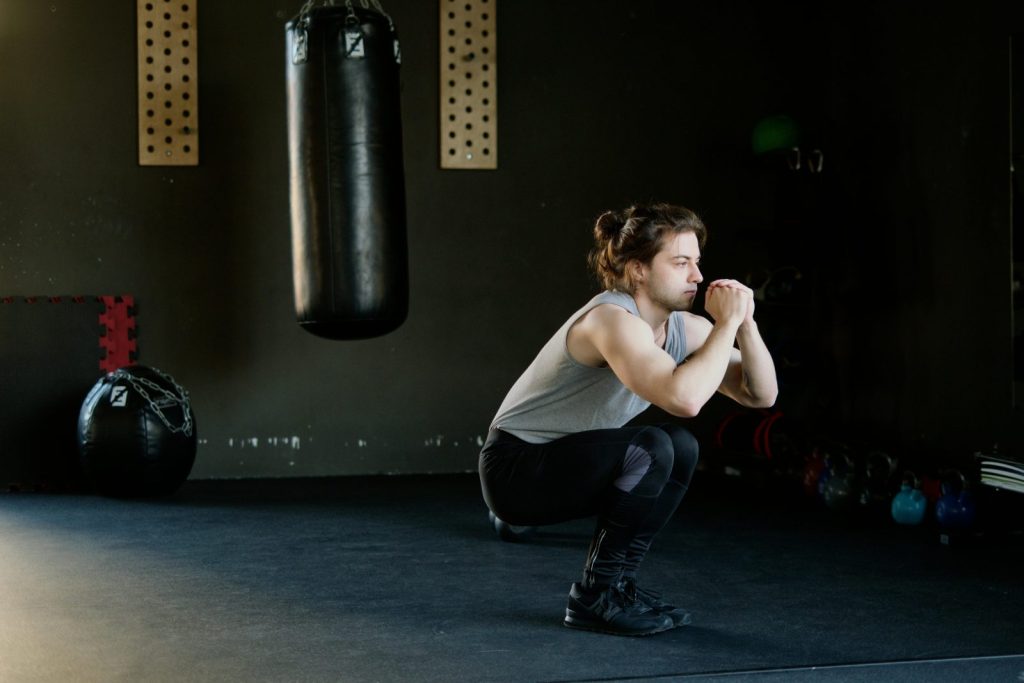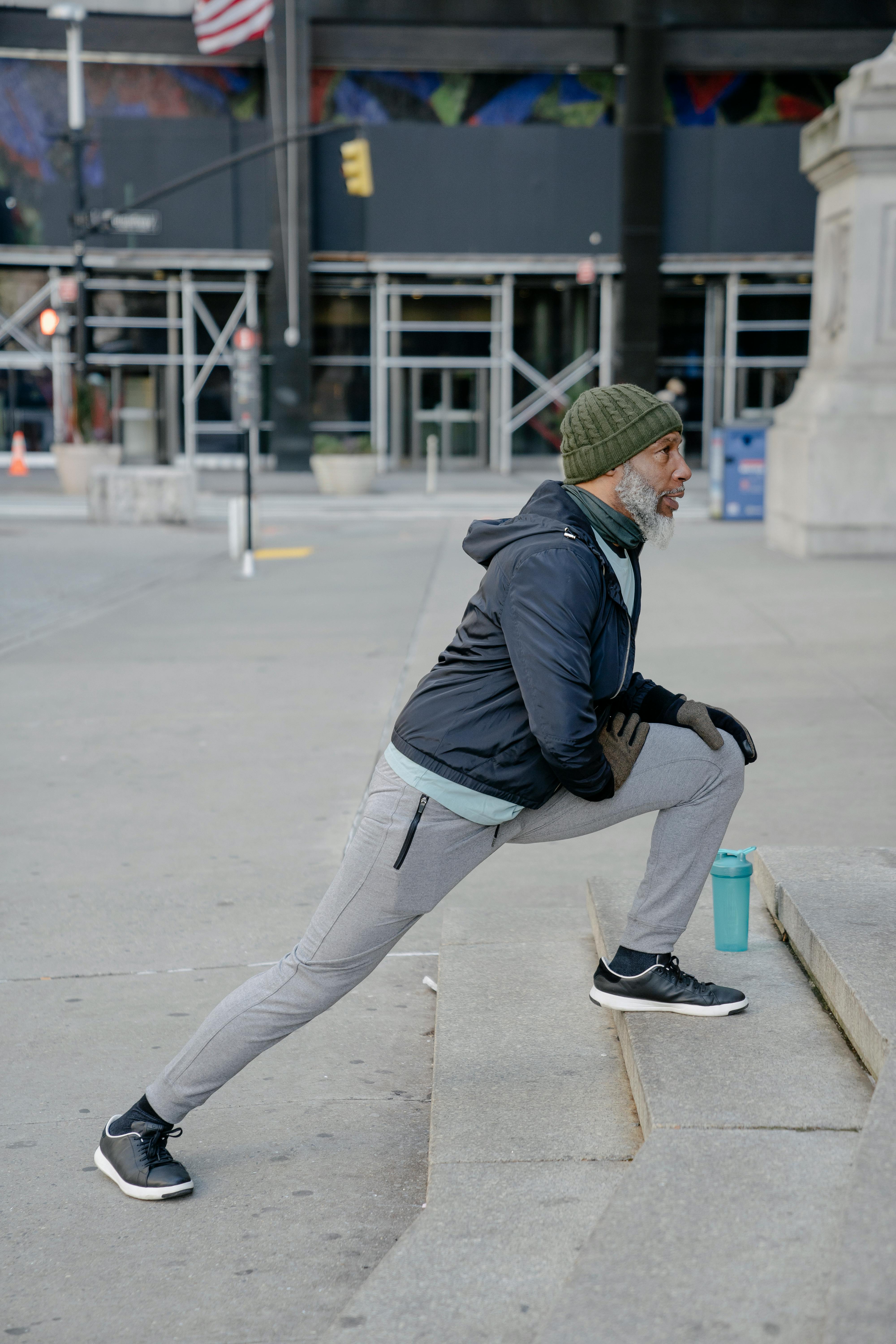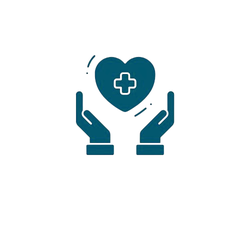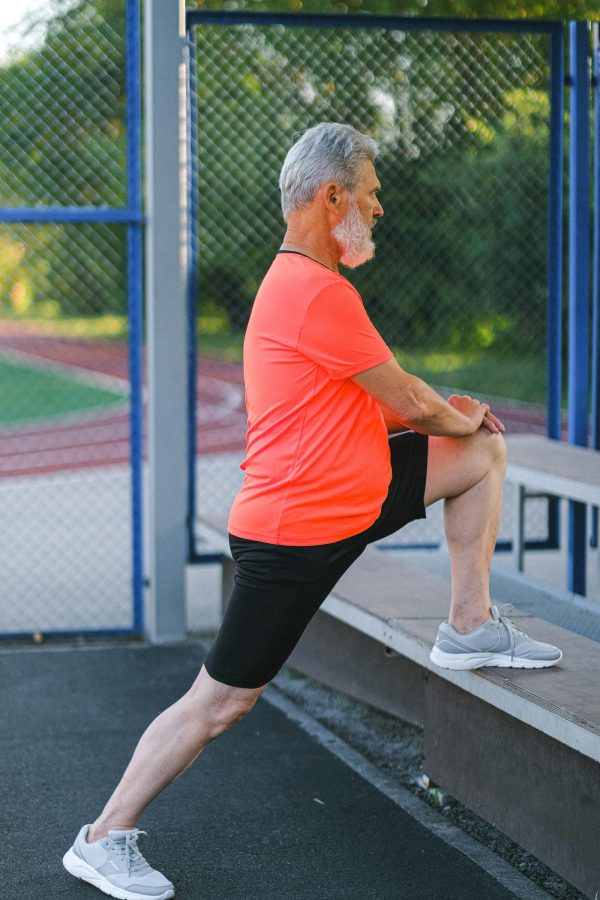Why do legs hurt after 40? If that question keeps popping up, you’re not alone. Crossing the 40s line doesn’t doom anyone to constant aches, but natural shifts in muscle mass, joint cartilage, circulation, posture, and hormones mean your legs may complain more often—especially after busy, sit-heavy days. The good news: with a few consistent habits, most causes of discomfort are manageable and, in many cases, preventable.
Natural Changes After 40
After 40, the body’s repair cycle slows a bit. Muscles lose some elasticity and power, tendons feel tighter in the morning, and joints can show early signs of wear. Veins don’t pump quite as efficiently, so fluid may pool by evening, leaving a sense of heaviness. None of this guarantees pain, but it raises the odds of stiffness, cramps, and “concrete legs” after long bouts of sitting or standing.
The National Institute on Aging consistently emphasizes that regular physical activity is one of the most effective ways to slow age-related decline and protect leg health. Put simply: motion is medicine.
This is also where a key question returns: why do legs hurt after 40 some weeks and feel fine on others? Often the difference is not age—it’s load management, sleep, hydration, and how much you move between long seated tasks.
Common Causes of Leg Pain After 40
While aging is part of the picture, several specific issues make leg pain more common after 40:
- Osteoarthritis: Cartilage thins over time, creating stiffness or aching in knees and hips—especially after inactivity.
- Varicose or “tired” veins: Weak vein valves lead to heaviness and swelling by day’s end.
- Neuropathy: Diabetes or nerve irritation can cause burning, tingling, or numbness in the feet and calves.
- Inactivity vs. sudden overactivity: Too little movement deconditions muscles; “weekend warrior” spikes irritate them.
- Vitamin D or magnesium shortfalls: Low levels are linked to cramps and fatigue in the lower limbs.
The National Center for Biotechnology Information notes that vitamin D deficiency is widespread in midlife and can worsen musculoskeletal symptoms.
If you’ve been wondering why do legs hurt after 40 on workdays but not weekends, notice patterns: hours seated, footwear, and whether you took short walking breaks can explain a lot.
Posture and Workplace Factors
Many people over 40 spend long hours at a desk or driving. Fixed positions compress hips, tighten calves, and reduce venous return. Crossing your legs, tucking one foot under the chair, or standing on hard floors without breaks are small habits that add up.
Quick fixes: adjust chair height so your hips are level with or slightly above your knees; keep both feet flat; place a small box under one foot if you must stand to shift weight; and take a two-minute “movement snack” every hour. These micro-changes stack up and can noticeably cut end-of-day heaviness.
Lifestyle Transitions After 40
Midlife often brings more responsibility and less free time. The sneaky result is fewer steps, more stress, and meals grabbed on the run. Over weeks, that quiet drift toward inactivity shows up first as leg fatigue, not dramatic pain. Reversing it doesn’t require a marathon plan: a standing coffee break, walking meetings, stairs instead of elevators, and short evening walks are small hinges that swing big doors.
If you ever ask yourself again, why do legs hurt after 40 when life gets hectic, remember: consistency beats intensity. Tiny daily wins matter more than once-a-week hero workouts.
Bone Density and Joint Health
Bone density gradually declines after 40—faster for women around menopause. Joints may feel achier after new activities, and small stress reactions can appear with big jumps in mileage or hill work. What helps? Weight-bearing exercise (walking, stair climbs, light jogging if appropriate) and strength training for hips, thighs, and calves to offload joints and keep steps springy.
Think of it as scaffolding: stronger muscles distribute force better, so each step “costs” your knees and ankles less.
Circulation and Hormonal Shifts
Veins like rhythm. Prolonged stillness lets blood pool, while a few ankle pumps or a hallway lap push it back toward the heart. Hormonal changes—perimenopause for women, a gradual testosterone decline for men—can also influence fluid balance and recovery speed. Hydration, short walks after meals, and (for some) light compression socks on long travel days are simple wins.
Ask a clinician if compression is right for you—strength varies, and the best choice depends on your veins and daily routine.
Your After-40 Strength & Mobility Plan
When people ask, why do legs hurt after 40, the answer often includes a strength gap. The solution isn’t complicated: brief, regular training for the whole lower chain—glutes, quads, hamstrings, and calves—plus a little mobility and balance work. Here’s a simple template:
- Strength (2–3×/week): chair squats, step-ups, bridges, calf raises. Start with bodyweight and add dumbbells or a backpack when it’s easy.
- Mobility (daily 5–8 minutes): ankle circles, heel-to-wall calf stretch, hamstring and quad stretches. Hold 20–30 seconds, breathe, do not bounce.
- Balance (3–5 minutes): single-leg stands while brushing teeth; add a gentle reach or close one eye to progress.
The goal is not soreness—it’s resilience. You should finish sessions feeling more capable, not wrecked.

Footwear, Surfaces, and Small Ergonomic Fixes
Shoes matter more than most of us admit. Flattened cushioning or a collapsed arch can turn a normal day into calf tightness or knee twinges. If the outsole is slick or the midsole feels “dead,” it’s time to replace. On hard floors at home, consider supportive house shoes or a cushioned mat in the kitchen. Vary walking routes so your legs don’t take the same repetitive impact every day.
Also check desk ergonomics: screen at eye level, hips level with or slightly above knees, and feet flat. Small adjustments, big payoff.
Recovery Rituals That Actually Help
Midlife legs love routine. A short evening wind-down—five minutes of gentle stretches, a warm shower, or a heating pad on tight calves—can turn “I’m wired” into “I’m ready for sleep.” If late workouts leave your legs buzzing, finish with a slow walk or a few minutes of easy cycling to tell your nervous system the hard part is over.
As a rule of thumb: if you’re still thinking why do legs hurt after 40 when climbing into bed, try shifting hard sessions earlier and build in a predictable cool-down.
Food, Hydration, and Smart Supplementing
Muscles recover on protein and movement. Aim for a palm-size portion of protein at each meal (eggs, fish, poultry, tofu, Greek yogurt). Add leafy greens, beans, and nuts for magnesium; potatoes, bananas, and avocados for potassium. Sip water through the day—air-conditioned offices and coffee both nudge you toward dehydration.
Supplements aren’t magic bullets, but they can fill gaps. Vitamin D is commonly low in adults who work indoors; magnesium may help frequent nighttime cramps. The smart move is to test and discuss doses with a clinician—more isn’t always better, and your needs are individual.
Lifestyle Habits That Make a Difference
Beyond formal workouts, daily choices shape how your legs feel. These simple habits keep discomfort from becoming a constant companion:
- Progress slowly: increase weekly activity by 10–20% rather than jumping from zero to hero.
- Move every hour: 2–3 minutes of walking or calf raises keep the “calf pump” going.
- Audit footwear: replace worn shoes; consider insoles if arches collapse or pronation is excessive.
- Sleep consistently: 7–9 hours on a steady schedule supports pain control.
- Hydrate & mineral check-ins: make water your default; discuss magnesium/vitamin D if cramps persist.
- De-stress daily: light yoga, breathing drills, or a short walk lower overall pain sensitivity.

Preventive Screenings After 40
Another overlooked part of managing leg pain after 40 is preventive care. Regular check-ups can surface issues before they become a problem:
- Blood sugar tests to screen for diabetes and neuropathy risk.
- Vitamin D and mineral checks if cramps or fatigue keep returning.
- Vascular exams if swelling, varicose veins, or evening heaviness are frequent.
- Bone density scans—especially important for women after menopause.
A proactive approach turns “why do legs hurt after 40” into “here’s what I’m doing about it”—and that mindset shift matters.
Quick Wins You Can Try This Week
- Put a mini-band by your desk: two sets of 10 side-steps per side at lunch.
- Swap one elevator ride per day for stairs.
- Do 20 calf raises while the coffee brews.
- Set a water cue: a glass on wake-up, mid-morning, mid-afternoon.
- Block a 15-minute “leg reset” walk on your calendar like any other meeting.
When to See a Doctor
Self-care goes a long way, but get medical advice if pain is severe, persistent, or steadily worsening; if one leg is swollen, red, or unusually warm; if you have unexplained numbness, tingling, or weakness; or if discomfort interferes with sleep, work, or daily life. Trust your instincts—if something feels off, it’s worth checking.
If you’re still asking yourself why do legs hurt after 40 despite steady habits and smart training, a clinician can help rule out vascular, nerve, or joint issues and tailor a plan for you.
My Personal Experience
After I turned 40, my legs started complaining after long days on my feet. I blamed it on aging, but the truth was simpler — less movement, rushed meals, and worn-out shoes. I began adding small “movement snacks”: calf raises while the kettle boiled, quick walks during calls, and step-ups on a sturdy stair. I swapped one evening of screen time for five minutes of stretching and a warm shower. Within a few weeks, my legs felt lighter, and that end-of-day ache had mostly faded.
The biggest surprise? Consistency won over intensity. A bit of strength work, a touch of mobility, and regular walks gave my legs a steady sense of ease. On busy days I still feel some heaviness, but now I know what helps — and that confidence matters just as much as the exercises themselves.
⚠️ Disclaimer: This article is for informational purposes only and does not replace professional medical advice. Consult a healthcare professional for persistent or severe leg pain after 40.

